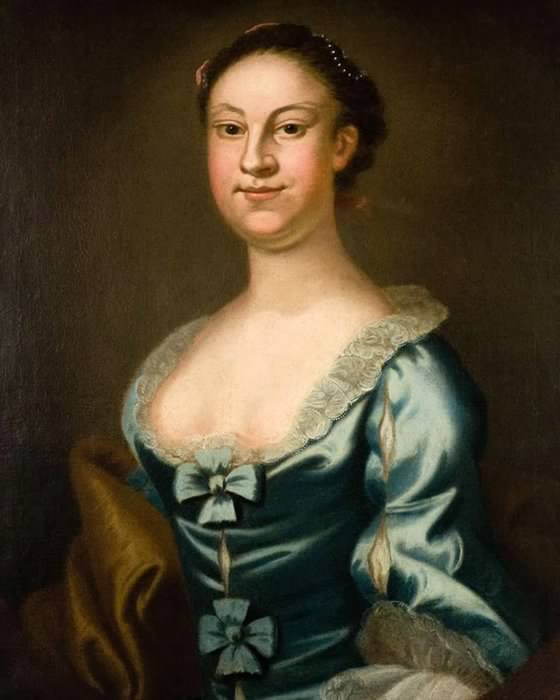A current slogan
of the American Cancer Society is I Can
Fight Cancer. But the reality is some cannot. The aggressiveness of the
disease and a person’s physical as well as mental ability to put up a fight is
critical.
With
advances in medicine and technology, it is a wonder there is not a less invasive
but compassionate way to provide relief.
I
also wonder how doctors during the colonial times were able to accurately
identify that both George Washington and his mother Mary Ball Washington had cancer.
As early as 1781,
Mary complained of health issues and expressed concern that she would not
survive another journey from Fredericksburg to the Lewis and Washington farms
over the mountains where their land bordered the Shenandoah River. Yet, she
survived an additional eight years with her children involved in caring and
providing for her.
Prior to his 1789 departure
for New York to assume his duties as President, George made a trip to visit his
mother and sister. Both women lived in Fredericksburg, Virginia, across the
Rappahannock River from the Washington childhood home.
Mary’s home in the
town of Fredericksburg was constructed on two lots her son had purchased in
1772. The prior year, George had surveyed the site of the childhood home and
surrounding land in anticipation of selling the property he had inherited from
his father’s estate. The move to the town lots allowed Mary to be closer to her
daughter whose plantation home located two blocks away was completed in 1775
before the onset of the Revolutionary War. When Mary moved to Fredericksburg,
her sons Samuel and Charles also lived in the vicinity.
Washington
expressed in letters to his peers an understanding that he would not see his
mother again…that his departure visit was truly farewell. Thus, it was George’s
sister Betty who was the primary caregiver for their mother in her final months.
Betty was assisted by her siblings who lived elsewhere. John Augustine lived a
day’s ride from Fredericksburg at his home of Bushfield in Westmoreland County, while both Samuel and Charles had
moved to the Shenandoah Valley also a day’s ride away.
Although Washington
duties required him to be in New York, he remained involved in the activities
at his home of Mount Vernon and in the lives of those closest to him. He
maintained contact with his sister.
Letters between
Betty and George provide evidence that hemlock was used to ease the pain of
cancer. One of the surviving letters includes a request for George to obtain
the hemlock in New York, as none could be found in Fredericksburg. Charles
Urquhart, a family friend from Fredericksburg, had traveled to New York and it
was hoped his presence would expedite the procurement of the hemlock needed to
relieve Mary’s pain.
Yet on August 30th
Urquhart was still in New York and the hemlock remained undelivered. It was Betty’s
son Robert who noted in his journal Urquhart’s attendance at church. Washington
had employed his nephew who lived in the Presidential household. Robert
received a salary of $300 per year for his service as a junior secretary to his
uncle.
Departing Virginia
after Washington, Robert served as escort to Martha Washington. They arrived in
New York just after the inaugural festivities that occurred in April 1789. Also
in traveling with them were Martha’s grandchildren, Eleanor Parke Custis and
her brother George Washington Parke Custis.
Upon arriving in
New York, Robert received a letter from his mother and sister noting his
grandmother was exceedingly ill and not likely to recover.
Mary
died at age eighty-two on August 27th 1789 after fifteen days of not
talking and five days in a coma. Her death occurred five months after Washington’s
inauguration. News of her death was conveyed to the Presidential household in a
letter from a relative, Burgess Ball. The letter reached the President on
September 1st. It was on that day Urquhart departed New York for
Fredericksburg carrying a letter written by Robert to his mother. The letter
concerned his grandmother’s health and caused Robert to lament the time of his
dispatch. Washington’s niece Betty Lewis in response to a request from her mother
also conveyed news of her grandmother’s death.
At
a favorite resting place located beneath the trees overhanging Meditation Rock and within view of her
daughter’s home, Mary was laid to rest on August 28th.
Washington, in observance
of his mother’s death, ordered black cockades and ribbons for the household
staff. Government officials wore black crepe on their arms. The Presidential
levees were cancelled for three weeks. Washington is noted to have worn the
mourning badges for at least five months following the death of his mother.
During this mourning period the family sealed their letters using black wax
instead of red.
On
September 13th, George wrote to Betty noting that at the advanced
age of eighty-two their mother had full enjoyment of her mental faculties and
as much bodily strength as usually falls to the lot of four score. George also
directed his sister to seek the advice of attorney and friend James Mercer as
because of the distance and circumstance he was unable to give the smallest
attention to the execution of their mother’s will. Mary had prepared for her
demise as her will was written on May 20th 1788, more than a year
prior to her death. Washington specifically requested his sister to oversee the
details of the will, the remaining harvest, the resolution of debts and
conducting a sell of personal property. He further requested his sister to
inform him if tending to the business is too troublesome. Betty is also
instructed to obtain the aid of her sons as well as son-in-law Charles Carter
and Burgess Ball.


